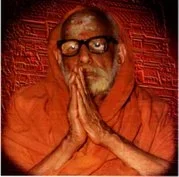My Understanding of advaitham=non-duality.
My Understanding of advaitham=non-duality.
Agara Mudhalla Ezuthellam Adi Bhagavan Mudhattray Ulagu=Thiru Valluvar=Advaitham=Non-Duality
Brahmana,Kshatriya,Vaishya,Shudra are only personality traits existing in humans all over earth.Based on the above four traits,permutation combination of various gunas (natures) emerge in a human being.All of us in the world are born as Shudras initially,but by virtue of our human nature displayed,we get bracketed into one of the four as stated above.
The learned sages/rishis/seers/teachers/gurus/bhagavan have said,lets take human anatomy as an example:
The face which is part of the head constitutes the 'brahmana'.=Intellectual,Advicer,Ruler,Governor,President,Chief-Minister,Prime Minister..etc
The arms which is protection for self-defense or offence,form part of chest region='Kshatriya'=Warrior,Defense Personnel,Security Personnel..etc.
The stomach forms part of the digestive system='Vaishya'=Business people,Trader,Industrialist.....etc
The feets which form part of legs='Shudra'=Who serve & equally govern all the above mebtioned people=Politicians,Leaders,Kings&Queens,...etc.
Despite such profiling of human beings,the ultimate is 'survival of the fittest'.The most compassionate human being survives and is successful in life.Love All Serve All.
Since color of the skin is being given undue importance,=the color of the skin should be divided as White,Yellow,Brown,Black.(Every normal human being has one head,two eyes,two ears,one mouth,one nose,two hands,one stomach,two legs & two feet) but somehow the visual impact of 'drishti' is making brains (budhi) go wonky tonky & common sense is getting lost,why?Becoz to make admin easy,they divide & rule in consensus.So,profiling is done and people become judgemental.Now profiling is done based on educational qualifications thereby enabling to acheive the above four traits of personalities.
Now,when we extend this to Sanathana Dharma aka hinduism is the popular definition=but, i define Sanathana Dharma as all encompassing of all religions in humanity=Advaitham=non-duality.Therefore hinduism is one among the many religions in the world.I include Abrahamic faiths like Judaism,Christanity,Islam also in Sanathana Dharma,and give Lord Abraham & Goddess Sara a place in my belief system of Sanathana Dharma ( as A B R A H A M is B R A H M A A and S A R A is S A R A S W A T H Y,from abrahams lineage came Moses,Jesus,Prophet Mohammad),as they include the same values of good life,which is what Sanathana Dharma is all about in the first place..=Advaitham=non-duality.
Again technically speaking color is only V I B G Y O R as violet,indigo,blue,green,orange,red when natural light from Sun,passes as sun rays, into prismatic model to refract light.
Orange represents Surya Bhagavan = Saffron Color.
White represents Chandra Bhagavan=White Color.
Red represents Angarakkan Bhagavan=Red Color.
Green Represents Budhan Bhagavan=Green Color.
Yellow Represents Brihaspathy=Yellow Color.
Whiteish Yellow Represents Shukran Bhagavan= Pale Yellow Color.
Violet,Indigo,Blue Represents Rahu,Kethu,Shanishwaran = Violet,Indigo,Blue color.
So,Nyattri Kizhamai,Thingatt Kizhamai,Budhan Kizhamai,Vyazhan Kizhamai,Welly Kizhamai,Shanieswaran Kizhamai,are nothing but celestial objects being used to demarcate Kaalam or time as seconds,hours,days,months,year,eras & eons(trasarenu,ahoram,muhurtham,naal,paksham,maasam,varusham=ayanam=uttara & dakshinam,yugam..etc).
Our gurus,termed the celestial objects as bhagavan ( so when celestial objects itself is termed as bhagavan then naturally people are also bhagavans according to gurus who are teachers in humanity) ,becoz they have an self-propelled orbital path just as bhu-loka has a self-propelled orbital path around surya bhagavan.Since bhu-loka is moving on its axis and revolving around surya bhagavan,our gurus called earth as bhu-devi or mother earth.As devi is the shakthi of shivan or mahalakshmi wife of vishnu or saraswathi wife of brahma.The trinity of existence/consciouness in all spheres of lives.The three becoming One consciousness is what guru strive to teach us,and its left to each individual to grasp this vidya,and perform services for people in bhu-loka for sanathana of yuge yuge.
Our gurus,therefore concluded in saying that,divinity is inherent in each and every body in bhu-loka as well as other lokas and we all live within divinity.This divine consciouness should get acknowledged and one must lead & live life with gratitude,respecting this sentiment in all,by giving respect and taking respect.
sb

